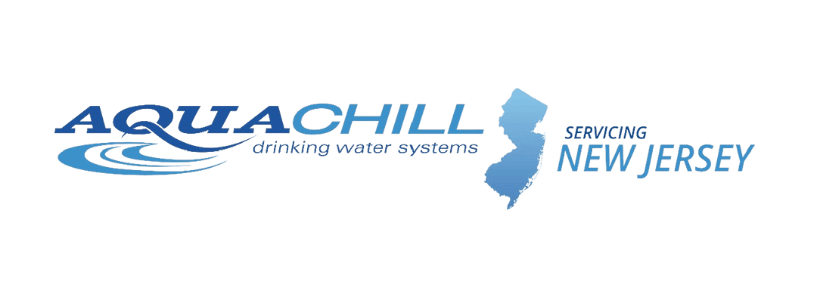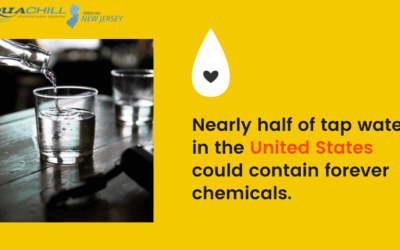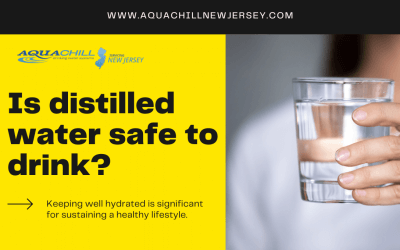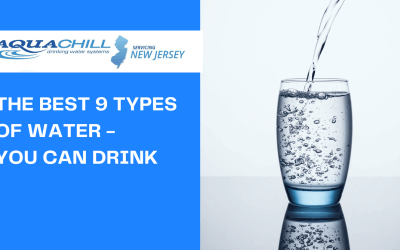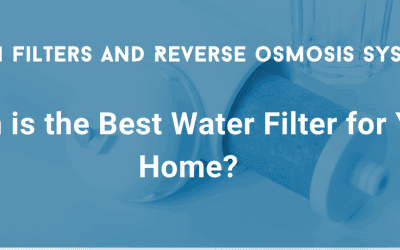Understanding the Key Differences of Purified vs Distilled vs Regular Water
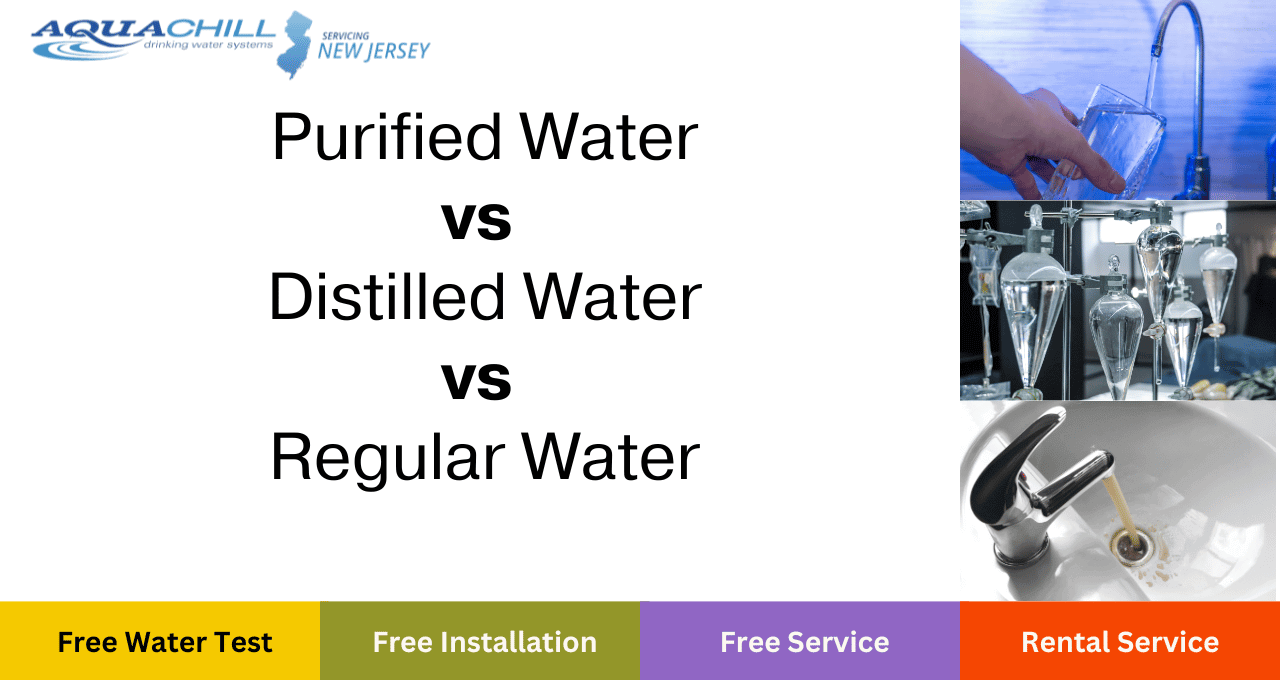
Understanding the importance of optimal water consumption for your body’s daily functions and overall health is key. Each tap and taste of water fuels our cells – offering a reason to prioritize hydration. Despite awareness on the significance of everyday fluid intake, some individuals need help choosing the best water.
This article explores the distinctions between purified, distilled and regular water, for clarifying the top choice for your healthy hydration needs.
What Is Purified Water?
Exuding superior quality and devoid of harmful elements, purified water obtains this stature by cutting through impurities generally seen in groundwater and tap water. The comprehensive cleansing process substantially reduces impurities including:
- Bacteria,
- Algae,
- Fungi,
- Parasites and metals such as copper and lead.
- It strikes chemical residues off the content list, delivering safe, sanitized water.
Whether amplified on a commercial scale or frugally executed in your kitchen setup, an array of protocols through which water purification can take place abounds.
Abiding by efforts to ensure water safety, most developed nations utilize water purification for their public drinking supplies. Yet, the particular specifics for purified drinking water stagger worldwide, hinging largely on either government statutory requirements or on an adherence to fundamental global norms.
The harsh truth – as World Health Organization suggests – over 2.1 billion inhabitants globally lack an assured accessibility to immaculately safe drinking water.
In the purification process of public drinkable water across many nations, various treatment strategies are adopted to ensure its safety. These encompass:
- Coagulation and Flocculation: To filter out impurities, water is treated with positively-charged chemicals that adhere to negatively-charged particles, forming larger ‘floc’ particles.
- Sedimentation: With an increased size, the floc begins to settle at the base of the water source, separating it from the clean water above.
- Filtration: The uncontaminated water at the top undergoes several rounds of filtration through systems filled with sand, charcoal, and gravel. This successful filtration process removes dust, bacteria, viruses, and chemicals.
- Disinfection: In this final stage, chemical disinfectants such as chlorine are infused into the water to annihilate any lingering bacteria or viruses that might have survived the initial stages.
It’s vital to remember that the water treatment process could differ based on the location and the quality of the local water body.
SUMMARY:
To summarize, purification of water involves an elaborate process that filters out various forms of contaminants such as soil particles and hazardous chemicals. This practice is widely employed in numerous countries to ensure that the tap water is purified and safe for individuals to consume.
Health Benefits of Purified Water
Even though tap water is deemed safe for consumption in various regions, it may still carry minute amounts of impurities. The US Environmental Protection Agency (EPA) sets prescribed permissible limits for over 90 contaminants found in drinking water, to safeguard consumer health.
The Safe Water Drinking Act authorizes each state to establish their own set of standards for drinking water, provided they comply with the basic contaminant requirements set by the EPA. Consequently, water regulations vary in strictness from state to state.
Safety measures are in place to guarantee that public drinking water is satisfactory for use, although it may have minuteness amounts of elements that could harm health.
Examples of heavy metals such as lead and copper are proven to be highly damaging to health; causing stomach ailments and, when consumed for an extended period, can even harm the brain.
It is no secret that toxic heavy metals have the potential to contaminate public drinking water, even in countries known for their stringent regulations.
By utilizing water filters for the home or drinking bottled water that has been cleaned, an extra degree of purifying can occur, which can eject metals, chemicals and other impurities, depending on the cleansing process we utilize.
Various water filtration systems, such as charcoal filters, are created to eliminate the presence of chlorine from tap supplies. Chlorine is generally included in public drinking water sources in order to act as a sanitizer.
Nevertheless, multiple research studies indicated that there may be an augmented danger of specific kinds of cancer – including colorectal cancer – developed from ingesting chlorinated water.
Water purification delivers an additional advantage of eliminating any disagreeable flavours caused by metals used for plumbing, organic matter or treatments with chemicals. Consequently, you will enjoy utterly pure-tasting drinking water.
Distilled Water Is a Type of Purified Water
Through the distillation process, purified water undergoes a meticulous procedure of boiling and condensation to eliminate minerals and impurities. This method effectively removes contaminants such as bacteria, viruses, protozoa like giardia, and chemicals like lead and sulfate. By boiling the water and collecting the steam, which eventually returns to its liquid state upon cooling, the purity of the water is guaranteed.
Distilled water’s exceptional purity makes it a popular choice in medical facilities and laboratories. While it is not as widely consumed as other types of purified water, some individuals opt for it due to its lack of contaminants.
Benefits of Distilled Water
Consider water distillation if you’re looking for a reliable method to purify your drinking water. The levels of harmful substances, such as pesticides and chemicals, in tap water can vary depending on where you live and the regulations in place. By using distilled water, you can ensure that the water you consume is free of contaminants like bacteria and pesticides, which could be beneficial for individuals with compromised immune systems.
Individuals with compromised immune systems, such as those with HIV/AIDS and certain cancers, may benefit from drinking distilled water. Distillation is a reliable method to purify drinking water, ensuring that harmful substances like bacteria and pesticides are removed. Tap water can contain varying levels of contaminants depending on where you live and the regulations in place, but by using distilled water you can have peace of mind knowing that the water you consume is free of impurities that could make you sick.
In addition to removing harmful substances, using distilled water can also improve the taste of your drinking water. This is because distilled water effectively removes chlorine, which can affect the taste and smell of water. By choosing to drink distilled water, you can enjoy a purer, better-tasting beverage while reducing your exposure to chlorine.
Potential Risks of Distilled Water
It’s important to keep in mind that while distilled water may be the purest form of water, it may not necessarily be the healthiest.
Although the distillation process is very effective at removing harmful contaminants, it also removes the natural minerals and electrolytes that are beneficial for our bodies. So, while it’s great for improving the taste and reducing exposure to chlorine, it’s important to consider other factors when choosing the best type of water for your overall health.
During the distillation process, harmful impurities are removed, and essential minerals like calcium and magnesium are left behind as the steam rises. As a result, distilled water often lacks the beneficial minerals found in tap water, with around 99.9% of all minerals typically removed. This is important to remember when determining the best type of water for your specific needs.
While water is often overlooked as a mineral source, a deficiency in these essential micronutrients can negatively affect your health. Drinking water with low levels of calcium and magnesium has been linked to an increased risk of preterm birth, heart disease, and fractures. It’s important to consider the mineral content of your water when making decisions about your health.
It’s worth mentioning that tap water doesn’t typically provide a significant amount of minerals for the average person. As long as a balanced diet is maintained, drinking distilled water is generally considered safe.
If you prefer to drink distilled water, it’s important to note that this purification method removes fluoride, which can increase the risk of cavities. To mitigate this risk, it’s crucial to maintain proper dental hygiene.
Should You Choose Purified Water Over Regular Water?
When it comes to accessing safe drinking water, public sources like tap water are often a reliable option. This is because regulatory agencies have established strict limits for contaminants, ensuring that the water meets safety standards.
While tap water is typically a reliable source of safe drinking water, contamination can still occur naturally or due to human activity, which can impact the quality of the water. To ensure the safety of your drinking water, it may be wise to consider investing in an in-home water purification system, especially for those with weakened immune systems who are more vulnerable to illness from contaminated water.
When traveling to countries where water contamination is a concern, it is always best to choose bottled or purified water. This is especially true in developing countries with limited sanitation facilities. There are many types of water purification systems available, such as charcoal and UV filters, that remove impurities that may still be present after the initial, large-scale purification process that tap water goes through. While tap water is generally safe to drink, contamination can still occur naturally or due to human activity, which can affect the quality of the water. For those with weakened immune systems who are more susceptible to illness from contaminated water, it may be prudent to invest in an in-home water purification system.
It’s important to note that in some countries, tap water is regulated for quality and safety, and can be a safe option for drinking. However, if you have doubts about tap water quality, there are ways to test it. You can purchase a home test kit or contact a water testing agency to ensure your drinking water is safe. Taking these precautions can help you stay healthy and hydrated while traveling.
How to Purify Your Drinking Water
Many individuals choose to use home water purifiers to improve the quality of their drinking water, even though most public drinking water sources are regulated for safety. It’s important to note that if you have any doubts about the quality of your tap water, you can purchase a home test kit or contact a water testing agency to ensure that your drinking water is safe. By taking these precautions, you can help ensure that you stay healthy and hydrated while traveling.
If you want to enhance tap water’s taste and purity, household water treatment units can be a great option. These systems are designed to remove specific contaminants and can greatly improve the overall quality of your drinking water. Point-of-use (POU) treatment systems specifically target the water used for consumption, such as drinking and cooking. Meanwhile, point-of-entry (PUE) treatment systems are designed to treat all of the water entering your home. By investing in a home water treatment system, you can enjoy clean, safe, and delicious water on a daily basis.
Point-of-use (POU) water treatment systems are a cost-effective solution for households looking to improve the quality of their drinking water. These filtration systems are easy to install and can be attached to the faucet or placed under the sink. Additionally, free-standing water pitchers with built-in filters, such as the popular Brita water filter, can also effectively purify your drinking water.
For those with refrigerators, some models come with built-in water purification systems for added convenience.
Choose the right POU system for your home and enjoy clean, safe, and delicious drinking water every day.
Most in-home water filtration systems use a variety of purification techniques to improve the quality of your drinking water:
- Water Filtration: One effective way to improve the quality of your drinking water is by using a filtration system that can trap unwanted impurities in the surface or pores of an absorbent medium. Charcoal filters, for instance, are a popular choice for removing contaminants from water.
- Reverse osmosis: Improve the purity of your drinking water using reverse osmosis systems, which incorporate a semipermeable membrane to effectively eliminate unwanted impurities.
- UV light: Enhance the safety of your drinking water by utilizing UV light filtration systems, which utilize ultraviolet light to effectively eliminate harmful bacteria and viruses.
When it comes to purchasing a water filtration system, prices can vary greatly depending on the type and model, ranging from as low as $35 to several hundred dollars.
To ensure that you get a high-quality filter, it’s important to look for brands certified by regulatory agencies like the American National Standards Institute (ANSI) and NSF International. By doing so, you can rest assured that you are investing in a reliable and effective solution for enhancing the safety of your drinking water.
The certification provided by ANSI and NSF International guarantees that the water filtration systems for households meet or surpass the national drinking water standards. Proper maintenance is crucial for ensuring the effective functioning of home water filtration systems. Therefore, it’s essential to follow the manufacturer’s guidelines for upkeep, including timely filter replacement, to ensure optimal drinking water purification.
The Bottom Line
Having access to clean drinking water is crucial for maintaining good health. Although public drinking water sources are typically well-regulated and safe to consume, some people opt for purified water. Purified water is a viable option and can help minimize exposure to certain contaminants that may be present in tap water. It’s important to keep in mind that water quality can vary depending on your location, so it’s ultimately up to you to decide whether to drink tap water or purified water.
Nearly half of tap water in the United States could contain forever chemicals.
Nearly half of tap water in the United States could contain forever chemicals.A report published by the U.S. Geological Survey discovered that as much as 45% of the water coming out of U.S. taps may contain one or more types of PFAS, which could pose a risk to human...
The Biden administration’s EPA has begun a major effort to minimize ‘forever chemicals’ present in drinking water.
It's a bold action which reflects what health authorities and local campaigners affirm is an overdue initiative. For the first time ever, the Biden government has suggested federal beverage water regulations for the use of toxic chemicals in manufacturing materials...
Tap Water Filter vs. Reverse Osmosis Water
Tap water is used for a wide variety of everyday household activities. You turn on the faucet to wash your hands, dishes and produce. You may go back to the tap to fill up a pot for cooking. Many people use their kitchen sink for drinking water, too. Given the central...
Is distilled water safe to drink?
Keeping well hydrated is significant for sustaining a healthy lifestyle. Could the consumption of distilled water be a favorable choice as opposed to other sorts of water? This article considers the features of distilled water compared to other kinds of water and...
The Best 9 Types of Water You Can Drink
The Best 9 Types of Water You Can DrinkIt is often said that people should drink more water. The amount of water consumed depends on the individual, however, staying hydrated can provide a variety of health advantages. These include enhanced energy levels and high...
The Best Under Sink Water Filtration system in New Jersey
The Aqua Chill provides the best under-sink water filtration system in New Jersey. It uses a three-stage filtration process to remove impurities from your water, including lead and other heavy metals.
Why Recycling Plastic is Practically Impossible
The recycling of plastic is practically impossible, and the problem is continuing to worsenThe large majority of plastic that people put into recycling containers is bound for landfills, or worse, as indicated by a Greenpeace report on the state of plastic recycling...
Best Bottleless water cooler in New Jersey
Have you ever wondered how our bottle-less water coolers are a revolutionary product in the water world? Let us explain! A bottle-less water cooler works with water without a container. Not unlike conventional coolers that accompany a bottle on top, these containers...
Carbon filters and Reverse Osmosis systems
Carbon filters and Reverse Osmosis systems. Which is the Best Water Filter for Your Home?Clean and fresh water is everyone's necessity. Even the simplest of items are expensive now, including clean water. With so many problems going on in the city of New Jersey, it is...
